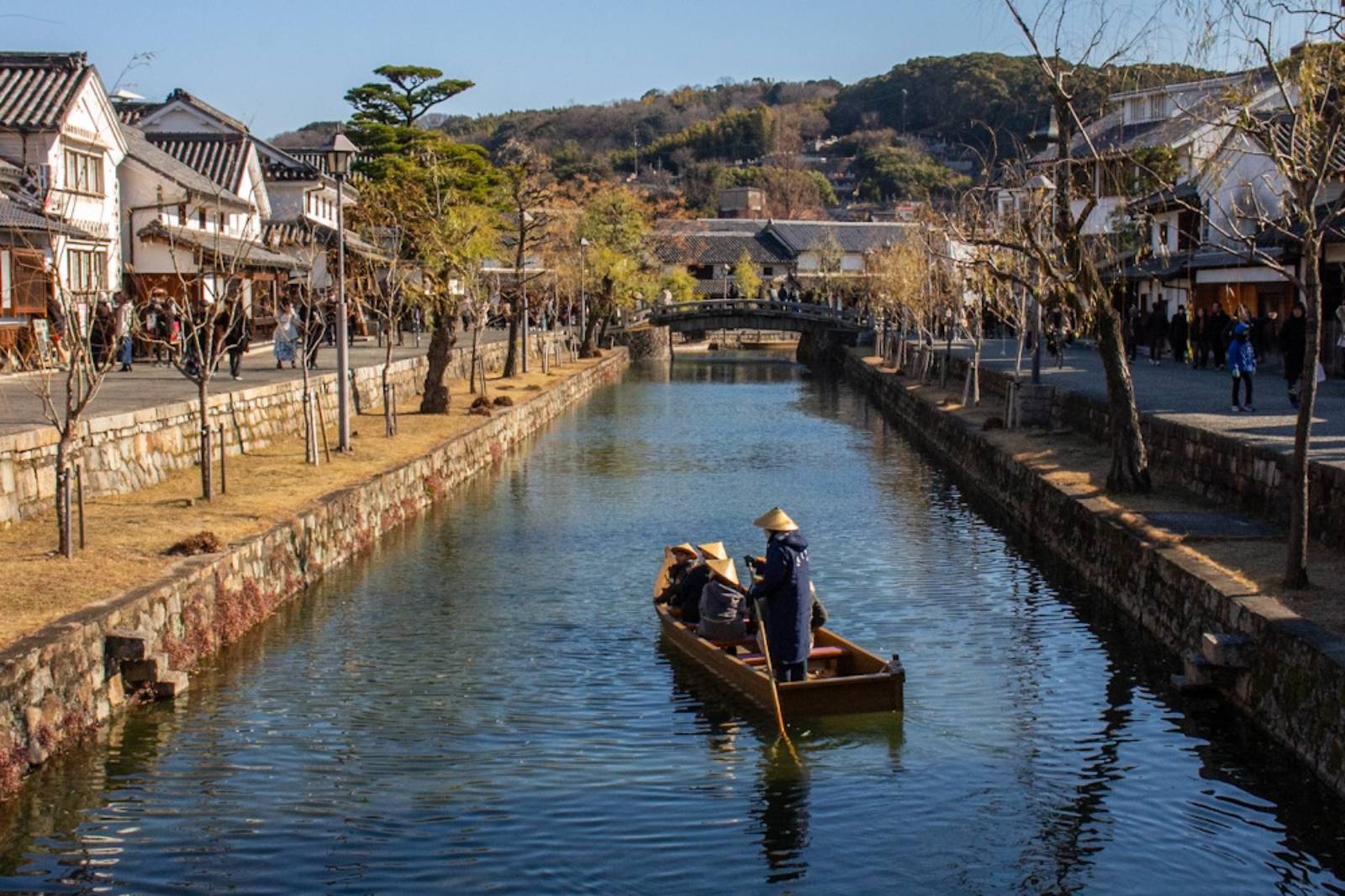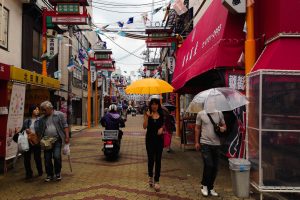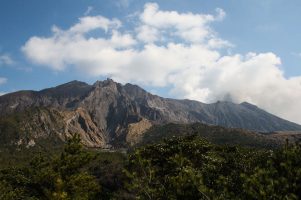The city of Kurashiki, in Okayama Prefecture, was once a bustling trade town during the Edo period. The traditional buildings, concentrated along the willow-lined Kurashiki River, have been preserved in an area known as the Bikan Historical Quarter. Featuring white-washed, black-tiled walls, tiled roofs, and latticed windows, the townscape is known for it’s retro scenery. The old mills, merchant houses, and textile factories have since been converted into charming shops, museums, and cafes, bringing Edo-period ambience to the modern day. And just a short ride from Okayama City, it makes a great day-trip destination for visitors to the area. Here’s a quick guide.

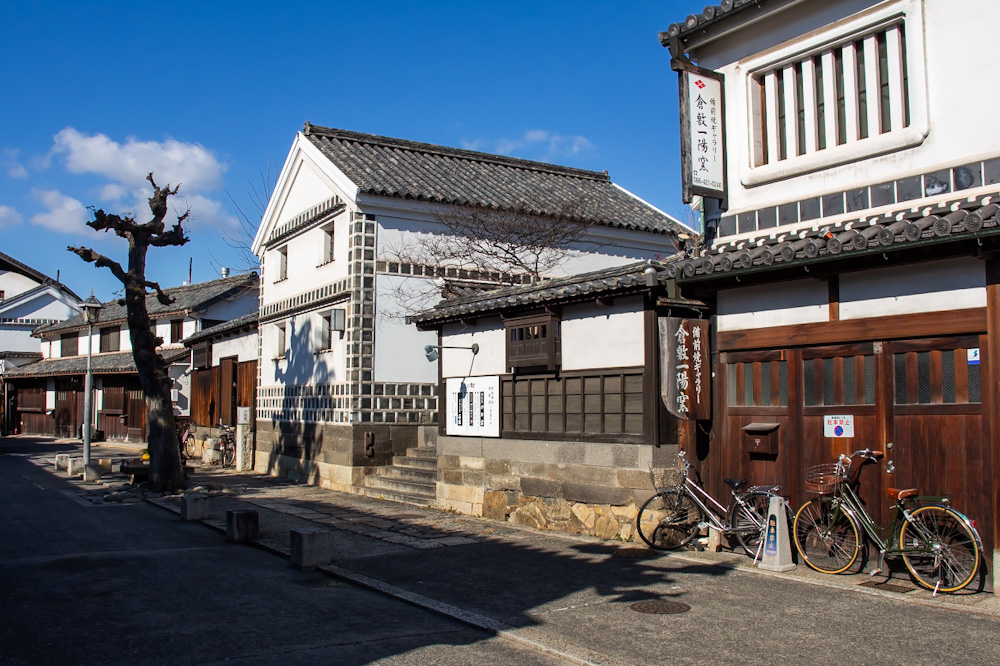
The Bikan Historical Quarter is about a 15-minute walk from JR Kurashiki Station. Head towards the covered shopping arcade, Kurashiki Center Street, and turn off onto Ebisu Dori. Keep walking and you’ll soon stumble upon an organic tea cafe called nagomi-Natulure. This is a great spot to grab a quick meal especially if it’s early morning, as it’s one of the few places around that opens before 10 am. I treated myself to their waffles and ginger latte, which I can’t recommend enough. The cafe also serves a light lunch, and if you like the tea you order, you can buy some at the counter to take home.
Right outside the cafe, Ebisu Dori joins Hon Dori, which will lead you right to the Bikan Historical Quarter. Just where the roads meet, you’ll see a sign indicating the west approach to Achi Shrine, which sits atop a nearby hill. It’s a famous spot for sunsets, so if time allows, be sure to circle back later.


If you turn right off Hon Dori right before it becomes Honmachi Dori and walk two blocks, you’ll arrive at Imabashi, one of three arched bridges that allow you to cross back and forth between each side of the Kurashiki river. These bridges are prime photo spots to capture views of the canal and traditional punting boats riding by. It still being winter, though, I couldn’t help but imagine how much better it would look in spring or summer. Still, it reminded me a lot of the Yanagawa canals in Fukuoka, and that made me smile. Nothing like a bit of nostalgia to warm you up on a cold day.
My first stop was the Ohara Museum of Art, a Kurashiki landmark. Ohara is Japan’s very first private museum dedicated to Western art, thanks to the efforts of two friends: businessman and collector, Ohara Magosaburo, and artist, Kojima Torajiro. It was built by Magosaburo in 1930 in honor of Torajiro, who had passed away the year before.


While he was still alive, Magosaburo had encouraged him to travel to Europe, which he did three times. While there, Torajiro began selecting European artworks by El Greco, Gauguin, Monet, and Matisee to send back to Magosaburo in Kurashiki.
The museum’s collection has since expanded to include more than 3,000 works, including Western masterpieces, Japanese modern art, and folk crafts. Notable pieces include El Greco’s The Annunciation and Monet’s Water Lillies. The museum is small and pricey with its entrance fee of 2000 yen, but the collection is well curated and memorable. I also enjoyed browsing the museum shop, which is in a separate location just around the corner.

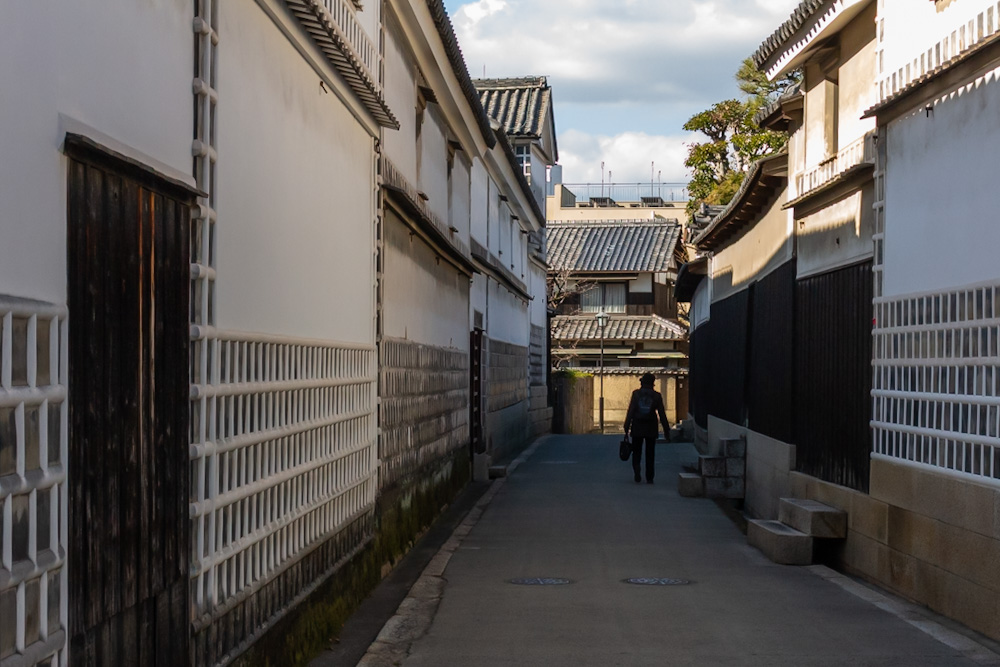
After exploring the museum, I headed south along the canal towards the Kurashiki Museum of Folkcraft, which is located inside a renovated rice granary from the the late Edo period. The museum compries three buildings and has 600 folkcraft items from Japan and around the world on display, including baskets, ceramic, glassware, and textiles. There’s also a gift shop on the first floor where you can buy goods from local artisans.
Just a few doors down is the Japanese Folk Toy Museum, which houses over 10,000 toys dating back to the 1600s. The first gallery showcases local toys by prefecture, from Hokkaido to Okinawa. In the second gallery, you’ll see clay and papier-mâché figures. The third gallery features a giant spinning top recognized by the Guiness Book of Records, and, the last gallery, Daruma, Hina, and Tenjin dolls. There’s also a toy shop where you can buy unique toys and souvenirs.
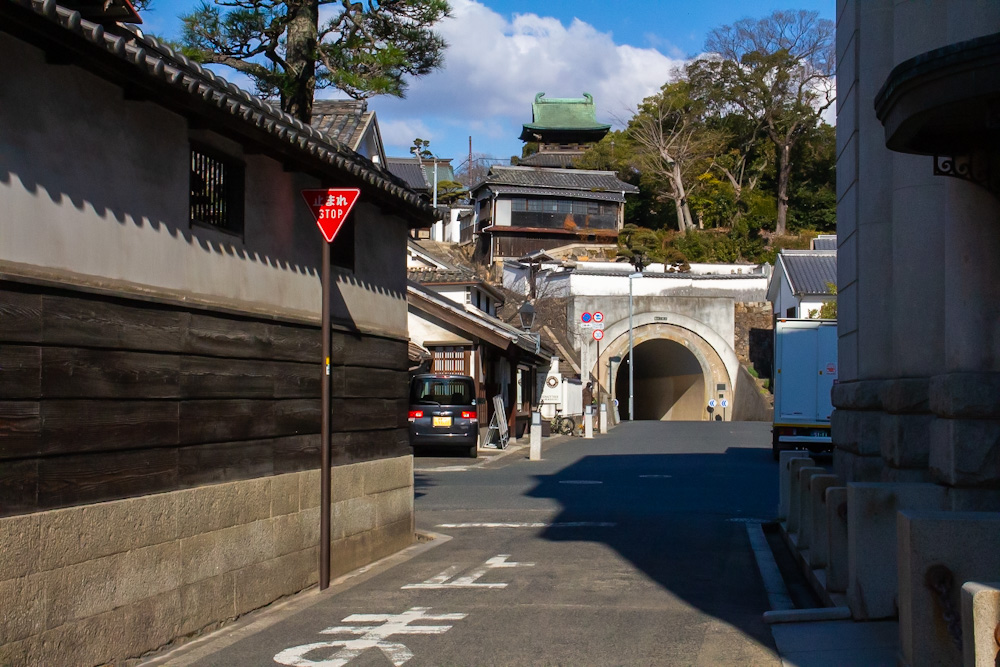
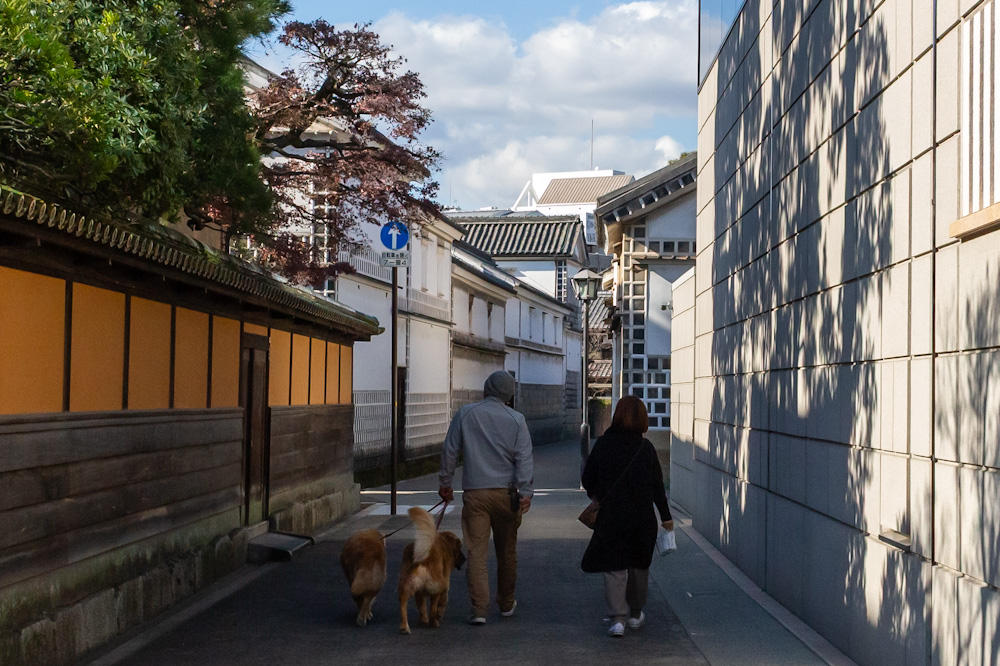
If you’re a jewelry fan, head into Dekoboko-dou next, which has an impressive selection of natural stones, including deep sea blue glass. You can even make your own accessories by joining one of their workshops. On the second floor is a free gallery showcasing the works of Okayama-born artist, Takehisa Yumeji, and stone sculptor, Kimio Inoue.
As you may have learned on your travels, Okayama is the home of Japanese denim, specifically Kurashiki’s district of Kojima. But if you can’t make it all the way to Kojima Denim Street, you can experience a bite-sized version right here in the Bikan Historical Quarter. Kurashiki Denim Street features a collection of boutiques selling Kojima denim and accessories. You can also try Ramune-flavored “Denim Soft” ice-cream and other blue-colored snacks. Ramune is a popular soft drink known for its distinct Codd-neck bottle and marble stopper.
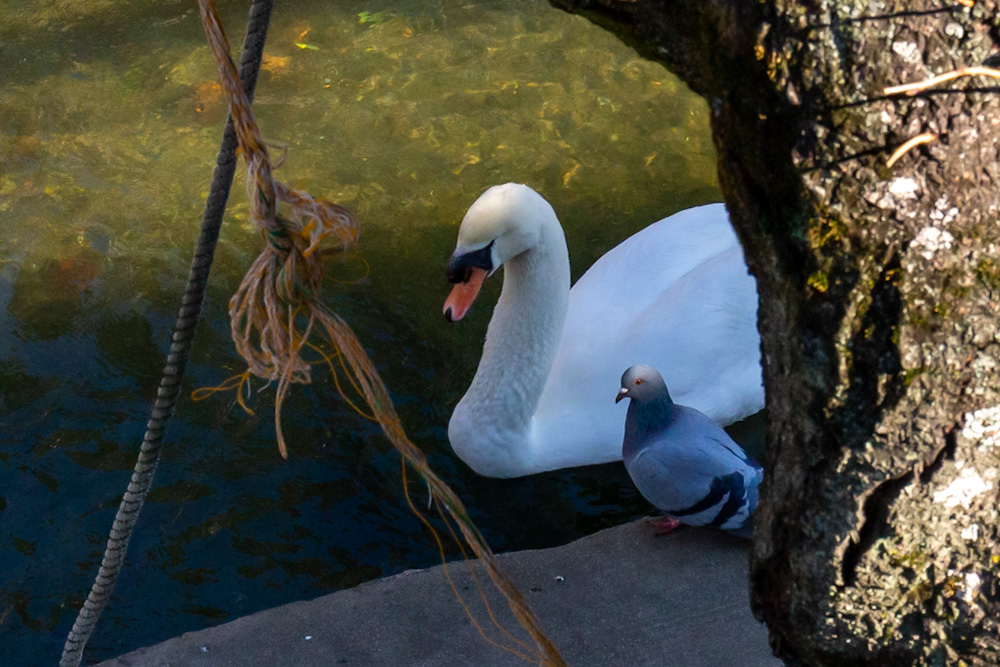

Okayama is also known as the home of Momotaro, a beloved folktale about a boy born from a peach. You can learn all about it at Momotaro’s Karakuri Museum. Cross the Takasago Bridge, take the second left, and you’ll see it on your left. This quirky museum features exhibits based on the folktale (and other Japanese legends) and a gift shop.
Keep walking straight up the street and you’ll eventually come to the west gate of Ivy Square. This red-bricked complex is the site of a former cotton mill and features a hotel, museum, restaurants, and gift shops. Be sure to browse the Ivy Academy and Ivy Shop souvenir stores for unique gifts, which include embroidered magnets of the area’s most famous locations, and kibi dango, or millet dumplings—an Okayama specialty.
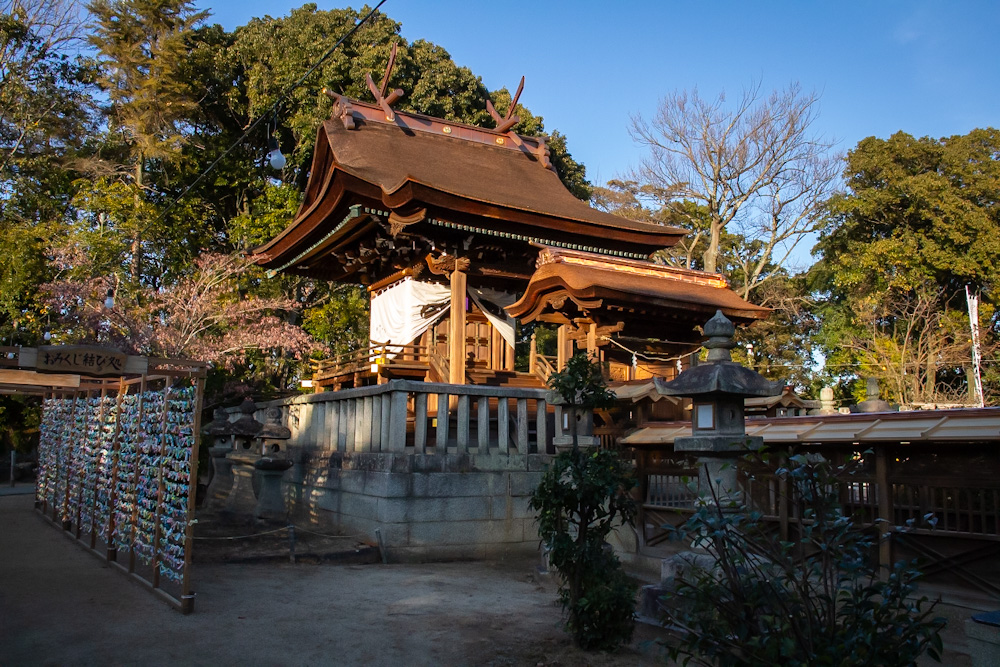

You can head back down to the canal to meander up it’s opposite side, or head back up to Honamachi Dori. Either way, there’s plenty more shops, restaurants, and museums to discover. For river boat rides, head to the boarding station on the right stide of the canal (starred on the map below.)
It was late afternoon when I finished exploring, so I headed up to Achi Shrine as a last stop before going back to the station. There’s a rest house right on the edge of the hill in the shrine grounds where you can sit and relax while you take in the city views and watch the sun set. I was too hungry to wait it out, though, so after a good rest, I made my way back to Kurashiki Center Street.
I was craving a burger, so was delighted to stumble upon 55 STORY’S. It may not be traditional Okayama fare, but the owner was super friendly, the food was bun-tastic, and the vibes were unmatched. 10/10 would eat there again.
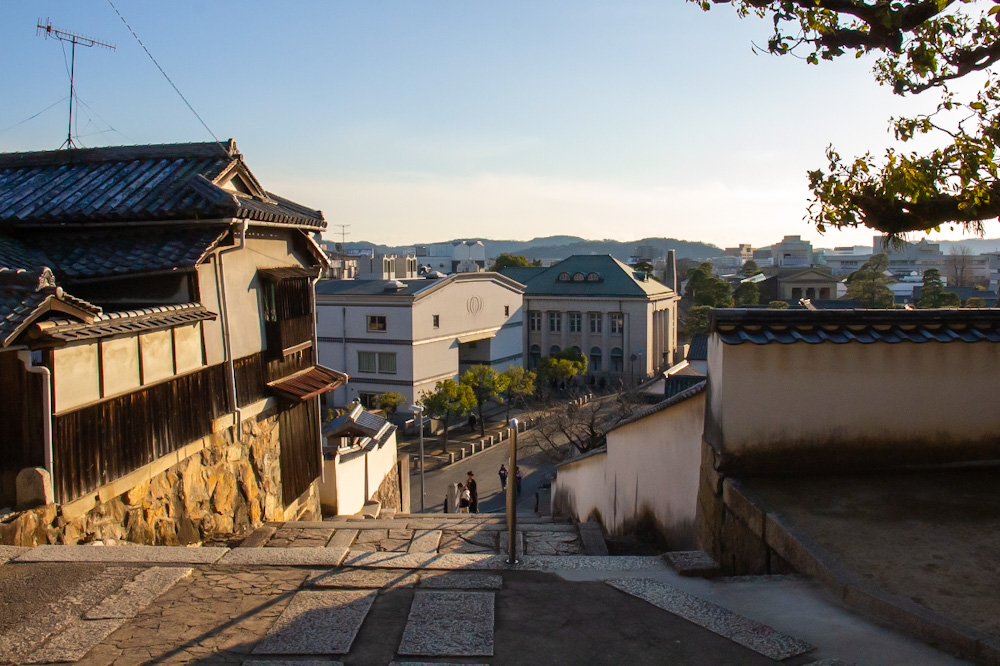

Visit The Kurashiki Bikan Historical Quarter
JR Kurashiki Station is a 22-minute train ride from JR Okayama Station on the Hakubi Line. From Kurashiki Station, it’s a 15-minute walk to the Bikan Historical Quarter. You can explore the Quarter on foot, via jinrikisha (Japanese rickshaw), or by traditional punting boat.
All the places mentioned in this article are featured on the map below. For more information, including opening hours and entrance fees, visit Kurashiki’s sightseeing website.
This article is also featured on GPSmyCity. To download this article for offline reading or create a self-guided walking tour to visit the attractions highlighted, go to Walking Tours and Articles in Kurashiki.
